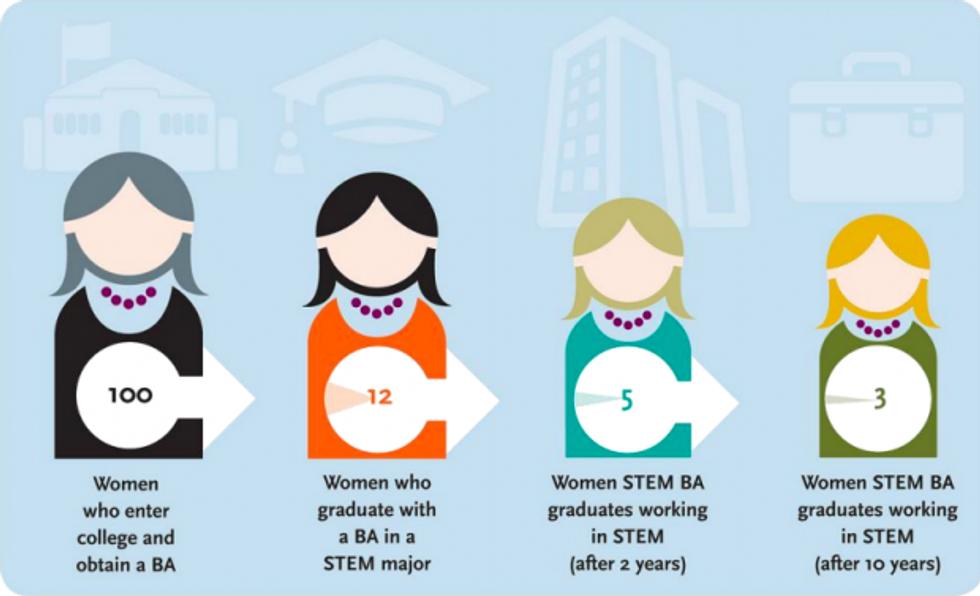Especially leading into the new year, there will be a massive market for new gadgets, tools, and most importantly—new innovations. While America has had some of the fewest problems when it comes to the advancement of science, we are still greatly hindering our chances of progress by discouraging the majority of our population—women—from going into science, technology, engineering, and mathematics (STEM). It should be no surprise that America, in addition to many other economically and scientifically leading countries, has been trying to take more steps to put women in STEM fields, particularly as the economy continues to improve.
A more important part of letting women into STEM fields is letting them become more educated in these fields and letting them stay once they make a difference. More women are in college than men currently and women are dominating in receiving all types of degrees. With women becoming a crucial part of advanced education, why are we still not highly employing these women in STEM fields? Sexism is the largest answer, almost obviously, because of our gender roles we have ascribed to various fields, particularly sciences. Research-based and even many applied fields of science have often been dominated by men, leaving women to a select few career choices.
So, what is the benefit of letting women into STEM other than social reasons? Women's brains work just as well at STEM fields as men's brains, leading no neurological reason why women should be left dry in science. More importantly, by shutting out a majority of our population from advancing knowledge, we are mostly relying on men to help us make breakthroughs such as cures for cancer and HIV, the solution to climate change, and even things on a smaller sociological level like how to get rid of racism. Particularly when it comes to technology, social sciences, and medicine—women provide a crucial side to the human race when it comes to further understanding ourselves and developing for the future.
A great part of this is being done not only through affirmative action programs and quotas to admit more women to increase diversity of knowledge and perspectives in STEM, but also through various education programs taken on by different governments (especially in the U.S. and U.K.) to not only teach girls more about STEM from an earlier age, but to get young girls more interested in these fields that have typically been male-driven and very masculinized. Efforts are being made from all over, including the White House to get females involved in this array of disciplines to further our understanding of the world around us as well as ourselves.






 StableDiffusion
StableDiffusion StableDiffusion
StableDiffusion StableDiffusion
StableDiffusion Photo by
Photo by  Photo by
Photo by  Photo by
Photo by 
 Photo by
Photo by  Photo by
Photo by  Photo by
Photo by  Photo by
Photo by  Photo by
Photo by 












